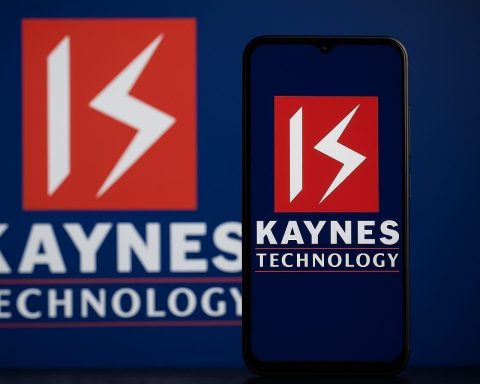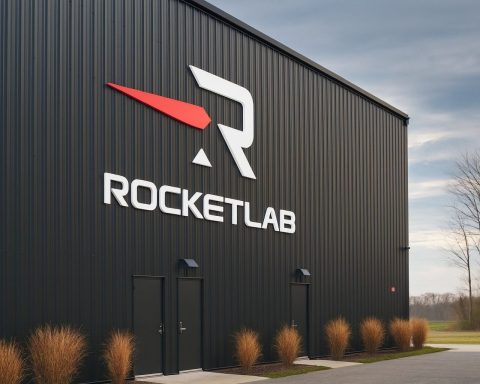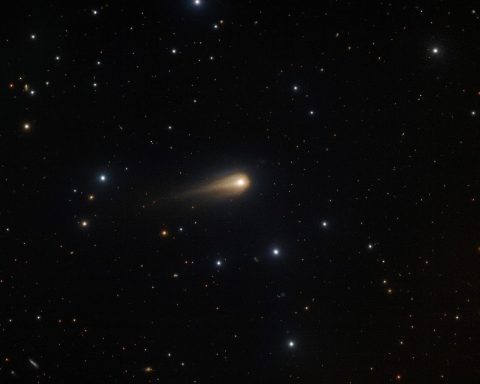- Crew-10, comprising NASA astronauts Anne McClain and Nichole Ayers, JAXA’s Takuya Onishi, and Roscosmos’ Kirill Peskov, is targeting undocking on Aug 8, 2025, with splashdown off the California coast on Aug 9, 2025, marking the first crewed California splashdown under NASA’s Commercial Crew Program after a five-month science mission.
- China completed the first full-scale test of its crewed lunar lander ‘Lanyue’ at a Hebei facility, validating its ascent and descent engines for a 2030 crewed lunar mission and bolstering plans for a joint International Lunar Research Station with Russia by 2035.
- ULA’s Vulcan rocket is slated to perform its first national security mission, USSF-106, no earlier than Aug 12, 2025, as the start of up to nine launches planned by the end of the year.
- Arianespace’s Ariane 6 inaugural launch is scheduled for Aug 12, 2025 from Kourou, carrying MetOp-SG-A1 and Copernicus Sentinel-5, ushering Europe into a new launch era.
- Rocket Lab cleared the integration for the US Space Force’s VICTUS HAZE mission, aiming to move from contract award to a ready-to-launch satellite in 15 months.
- SpaceX attempted to launch 24 satellites for Amazon’s Project Kuiper on Falcon 9 mission KF-02 on Aug 7, with the initial launch scrubbed and rescheduled for Aug 8 at 9:40 a.m. EDT to raise Kuiper total to 102 satellites.
- SpaceX and Italy’s ASI agreed to fly Italian experiments on Starship’s first Mars missions, including a plant-growth module, a meteorological station, and a radiation sensor.
- Firefly Aerospace completed its Nasdaq IPO on Aug 7, 2025, with shares opening at $70 and a market valuation around $9.8 billion after raising about $868 million.
- The UK Civil Aviation Authority granted Skyrora the first-ever domestic space launch licence for SaxaVord spaceport in the Shetland Islands, Scotland, enabling up to 16 vertical launches per year.
- The report notes dozens more launches booked on ULA’s Vulcan, Blue Origin’s New Glenn, and other rockets in the coming years.
From astronaut splashdowns to Moon lander trials and multi-billion dollar investments, the space sector saw a flurry of major developments on August 7–8, 2025. Here’s a roundup of the top satellite and space news from around the world:
Crew-10 Astronauts Set for Historic Splashdown
NASA and SpaceX are targeting Friday, Aug. 8 for the undocking of the Crew-10 mission from the International Space Station, with splashdown expected on Saturday, Aug. 9 [1]. This return will mark the first-ever crewed splashdown off the California coast under NASA’s Commercial Crew Program [2]. The Crew-10 team – NASA astronauts Anne McClain and Nichole Ayers, JAXA’s Takuya Onishi, and Roscosmos cosmonaut Kirill Peskov – is wrapping up a five-month science mission in orbit and will bring back time-sensitive research to Earth [3]. Mission managers are monitoring weather and sea conditions closely, but if all goes to plan, Crew-10 will make spaceflight history with its West Coast landing.
China Test-Fires Moon Lander for 2030 Mission
China’s space program has completed the first full-scale test of its new crewed lunar lander, a vehicle it hopes will put the first Chinese astronauts on the Moon by 2030 [4]. The test, conducted at a facility in Hebei province simulating the Moon’s surface, verified the lander’s ascent and descent engines and is being hailed as “a critical milestone in the development of China’s manned lunar exploration program,” according to China Manned Space officials [5]. The lander – named “Lanyue” (meaning “embrace the moon”) – will ferry taikonauts between lunar orbit and the surface and then serve as a living space, power supply, and data hub once on the Moon [6]. This progress comes as China races to achieve a crewed lunar landing before the end of the decade, bolstering plans for a joint International Lunar Research Station with Russia by 2035 [7].
Launch Industry Ramps Up: ULA Vulcan & Ariane 6 on Deck
In the launch sector, United Launch Alliance (ULA) is on the cusp of a major milestone for its next-gen Vulcan rocket. ULA President Tory Bruno confirmed that Vulcan’s first national security mission – carrying a pair of U.S. Space Force payloads (USSF-106) – is slated for liftoff as soon as August 12 [8]. “This is the inaugural launch of Vulcan into national security space. It is what we designed this rocket to do,” Bruno said, emphasizing the importance of the mission [9]. ULA aims to execute up to nine launches by year’s end (using a mix of Vulcan and remaining Atlas V rockets) as it scales to a cadence of about two launches per month by early 2026 [10].
Meanwhile in Europe, Arianespace is readying the debut flight of its new heavy-lift Ariane 6 rocket. The inaugural Ariane 6 launch is scheduled for Aug. 12 from Kourou, carrying EUMETSAT’s MetOp-SG-A1 weather satellite (the first of a new generation) along with the Copernicus Sentinel-5 atmospheric monitoring instrument [11]. This mission will usher in Europe’s next era of launch capability after the retirement of Ariane 5. Even smaller launch providers are making strides: Rocket Lab announced it cleared a key integration review for the U.S. Space Force’s tactically responsive VICTUS HAZE mission – moving from contract award to a ready-to-launch satellite in just 15 months [12]. The experimental VICTUS HAZE program will demonstrate the ability to build, launch, and deploy a satellite on extremely short notice to meet urgent national security needs [13], underscoring the growing focus on rapid launch operations.
SpaceX Launches Boost Satellite Constellations
SpaceX and Amazon pressed forward with building a new broadband megaconstellation. On Aug. 7, SpaceX attempted to launch 24 satellites for Amazon’s Project Kuiper network aboard a Falcon 9 (mission KF-02), the second of three dedicated Falcon 9 flights Amazon purchased to deploy its internet constellation. The initial launch attempt was scrubbed prior to fueling – SpaceX said it needed “additional vehicle checkouts” – and has been rescheduled for Friday morning, Aug. 8 [14] [15]. Liftoff from Cape Canaveral is now set for 9:40 a.m. EDT, weather permitting [16]. The mission will loft another 24 Kuiper satellites to low Earth orbit, adding to the 78 already on orbit from earlier launches and bringing the total to 102 satellites if successful [17]. Project Kuiper ultimately envisions a fleet of 3,200+ satellites beaming broadband globally [18], rivaling SpaceX’s own Starlink system. For this launch, SpaceX is using a brand-new Falcon 9 booster and plans to recover it downrange; pending the new attempt, Amazon’s satellite rollout remains on track with dozens more launches booked on ULA’s Vulcan, Blue Origin’s New Glenn, and other rockets in the coming years [19].
Starship Mars Pact: SpaceX and Italy Team Up for Red Planet Science
In a first-of-its-kind international partnership, SpaceX has signed a deal with the Italian Space Agency (ASI) to fly Italian scientific experiments on Starship’s inaugural commercial missions to Mars [20]. ASI President Teodoro Valente announced on Aug. 7 that Italy will contribute several payloads to SpaceX’s first Mars-bound Starship flights. The experiments – including a plant-growth module, a meteorological station, and a radiation sensor – are designed to collect data during Starship’s roughly six-month cruise to Mars and after landing on the Martian surface [21]. “SpaceX is now offering Starship services to the Red Planet. We’re excited to work with the Italian Space Agency on this first-of-its-kind agreement,” SpaceX President Gwynne Shotwell said, celebrating the deal on social media [22]. This collaboration not only gives Italy a head start in Mars research but also marks the first commercial payloads booked for Starship to Mars, a significant vote of confidence in SpaceX’s super-heavy launcher. Starship has yet to reach Earth orbit, but SpaceX founder Elon Musk has predicted the rocket will enable crewed Mars missions in the coming years. The ASI partnership suggests global interest in leveraging Starship for deep-space science and signals the expanding international cooperation in Mars exploration.
Industry Milestones: Firefly’s IPO and UK’s First Launch License
It was a big week for space business and policy. Texas-based launch company Firefly Aerospace made a splash on Wall Street with its Nasdaq IPO on Aug. 7, as investors snapped up shares in the rocket and lunar lander firm. Firefly’s stock opened at $70 (above the $45 IPO price), soaring over 55% and giving the company a market valuation of about $9.8 billion [23]. The IPO raised approximately $868 million in new capital [24] and marks a dramatic turnaround for Firefly – a company that, five months ago, became the first private enterprise to successfully land on the Moon as part of a NASA-sponsored mission [25]. “We at Firefly have had a lot of successes toward going public,” Firefly CEO Jason Kim told Reuters, pointing to the startup’s breakthrough Moon landing, a rapid-response Pentagon launch in 2023, and a growing line of space vehicles for the U.S. Space Force [26]. Analysts say Firefly’s post-IPO surge reflects bullish sentiment about the NewSpace sector, as private firms become increasingly critical to national space programs [27] [28].
Across the Atlantic, the United Kingdom notched a regulatory first by granting its first-ever space launch licence to a homegrown rocket company. The UK Civil Aviation Authority announced on Aug. 5 it has approved startup Skyrora to launch satellites from the country’s new SaxaVord spaceport in the Shetland Islands, Scotland [29]. The licence allows Skyrora to conduct up to 16 vertical launches per year (pending range safety approvals) and represents “a major milestone for our space sector and our nation,” according to CAA Chief Executive Rob Bishton [30]. The move positions Britain to join the small club of nations with domestic orbital launch capabilities, as the government eyes a share of the booming ~$1 trillion global space market [31]. However, regulatory green-light in hand, Skyrora still faces scheduling hurdles – the SaxaVord spaceport is fully booked with other customers this year, meaning the company’s first UK launch likely won’t occur until 2026 [32]. In the meantime, Skyrora is exploring alternate launch sites abroad. The UK’s push for launch capability follows an earlier attempt at horizontal launch in 2023 that ended in failure, but officials are optimistic that a successful Scottish space launch in the near future will cement the UK’s status as a player in the new space economy.
Sources: Official press releases and reports from NASA [33] [34], Spaceflight Now [35] [36], Space.com [37] [38], Reuters [39] [40] [41], and other reputable space news outlets.
References
1. www.nasa.gov, 2. www.nasa.gov, 3. www.nasa.gov, 4. www.reuters.com, 5. www.reuters.com, 6. www.reuters.com, 7. www.reuters.com, 8. spaceflightnow.com, 9. spaceflightnow.com, 10. spaceflightnow.com, 11. www.esa.int, 12. www.businesswire.com, 13. www.businesswire.com, 14. spaceflightnow.com, 15. spaceflightnow.com, 16. spaceflightnow.com, 17. spaceflightnow.com, 18. spaceflightnow.com, 19. spaceflightnow.com, 20. www.space.com, 21. www.space.com, 22. www.space.com, 23. www.reuters.com, 24. www.reuters.com, 25. www.reuters.com, 26. www.reuters.com, 27. www.reuters.com, 28. www.reuters.com, 29. www.reuters.com, 30. www.reuters.com, 31. www.reuters.com, 32. www.reuters.com, 33. www.nasa.gov, 34. www.nasa.gov, 35. spaceflightnow.com, 36. spaceflightnow.com, 37. www.space.com, 38. www.space.com, 39. www.reuters.com, 40. www.reuters.com, 41. www.reuters.com










